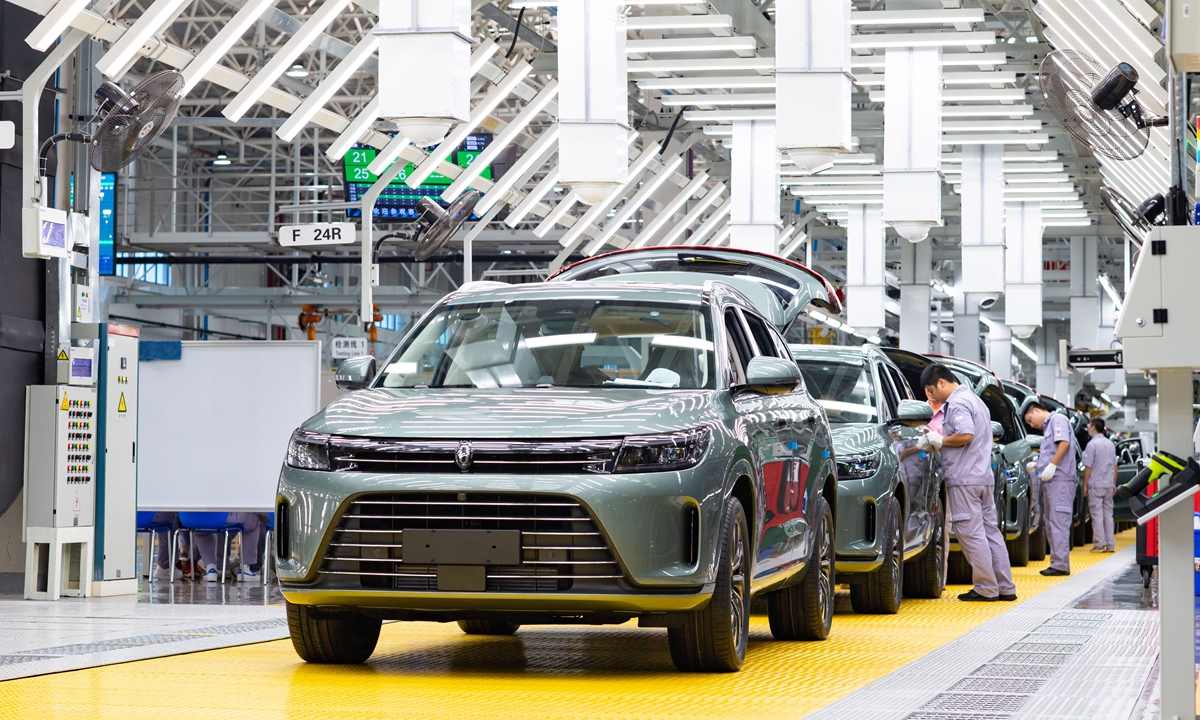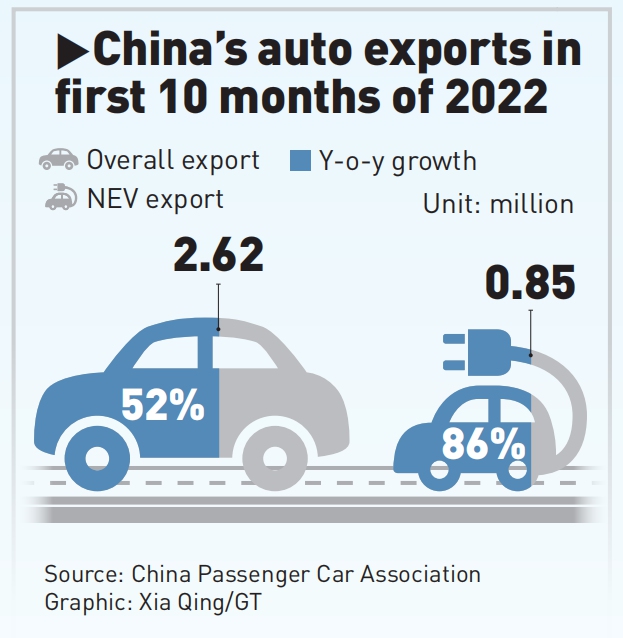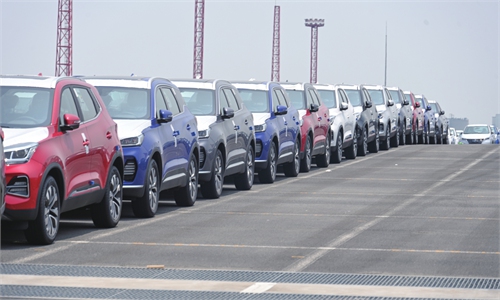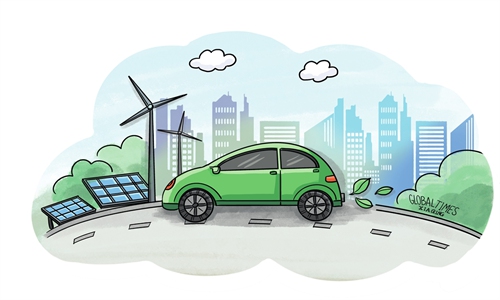Chinese NEVs shine at Thailand auto show; more export opportunity expected amid global energy crunch
Advanced technologies and localized services needed to keep brands competitive: expert

An NEV manufacturing line in Southwest China's Chongqing Municipality Photo: VCG
China's leading new-energy vehicle (NEV) makers showcase their latest models at the 39th Thailand International Motor Expo held in Bangkok, which runs through December 12, as Chinese auto brands accelerate their go global push, along with improving their international competitiveness.Industry experts said many countries' green and low-carbon transformation as well as tight energy supplies in regions like Europe will create new opportunities for China's NEV exports, and Chinese brands should continue to enhance their technological capability, step up localization and after-sales service to foster improved brand image.
Attracting attention
China's leading sport utility vehicle (SUV) maker Great Wall Motor (GWM) debuted its Ora Grand Cat, the first premium pure electric coupe from the ORA brand, in addition to best-selling vehicles including the Haval H6 Hybrid, which was used as one of the official logistic vehicles for the APEC Economic Leaders' Meeting in November, according to a company press release.
GWM also held its first overseas dealership conference in Thailand during the auto expo, attracting over 200 car dealers from 50 countries and regions to experience its advanced models and technology.
SAIC Thailand is presenting nine models at the exhibition, including three pure EVs, among which the MG4 is the first rear-wheel drive electric vehicle launched in the Southeast Asian market, the Xinhua News Agency reported.
According to the Chinese carmaker, the new model offers a better driving experience compared with similar models in terms of control and stability, and has earned positive reviews from local motorists.
Another NEV brand BYD highlighted BYD ATTO 3, its first passenger car model for the Thai market. It also presented two flagship models of Tang EV and Han EV and unveiled four best-selling models including Qin Plus DM-I and Song Plus DM-I, the company said in a press release.
Prior to the international auto show in Bangkok, Chinese NEVs were squarely in the spotlight during the Paris Motor Show in October and at the Dragon Gear 2022 held in Kuwait, a special exhibition for Chinese vehicles in September.
"The development of China's national auto brands has entered a new phase, with the country's leading position in new-energy technologies bringing new opportunities for the country's NEVs. The policy support for green development in some countries as well as global tight energy supply mean great sound opportunity for the export of China's NEVs," Cui Dongshu, secretary general of the China Passenger Car Association, told the Global Times on Monday.

Graphic: Xia Qing/GT
Surge in exports
As automobile demand overseas continues to rebound, combined with the recovery of China's industrial chain, Chinese car exports, especially NEVs, have experienced fast growth this year. According to data from the China Passenger Car Association, China's auto exports neared 2.62 million units in the first 10 months of the year, rising 52 percent from the previous year. NEV exports saw a year-on-year growth of 86 percent to reach 850,000 units.
Since the beginning of 2022, an increasing number of Chinese NEV brands have focused on their international footprint, with their layout overseas continuing to gradually expand from traditional markets such as Africa and the Middle East to the US and Europe. For example, domestic automakers such as BYD and Nio are making inroads in new markets including the Netherlands, Germany and Sweden.
Driven by surging overseas demand, Chinese carmakers have been expanding their investment in their own ships to transport vehicles abroad.
On November 26, COSCO Shipping Car Carriers Co - carrying 3,859 China-made vehicles departed from Shanghai to Dubai's Jebel Ali Port and Saudi Arabia's Dammam Port. It marks the opening of the first automobile shipping route linking Shanghai and the Persian Gulf.
The company said that it has started building new vessels, planning to deploy another 15 large-scale car vessels with capacity of 7,000 to 8,600 units, and it will continue to expand routes to Europe, South America, Australia and other regions to ensure industrial chain stability for China's automobile industry.
The robust growth in China's car exports is mainly due to a stable domestic industrial chain and the explosion of the NEV vehicle market, according to Pan Helin, co-director of the Research Center for Digital Economics and Financial Innovation at Zhejiang University.
Cui said that Chinese auto brands need to make improvements in technology, localization, in addition to charging and after-sales services to win over new consumers and build a positive brand image.
On top of solid cooperation with local partners, Chinese car brands should strive to make breakthroughs in key components, power batteries and chips so as to jointly contribute to local automobile industry transformation and upgrade with a focus on win-win results, experts stated.



